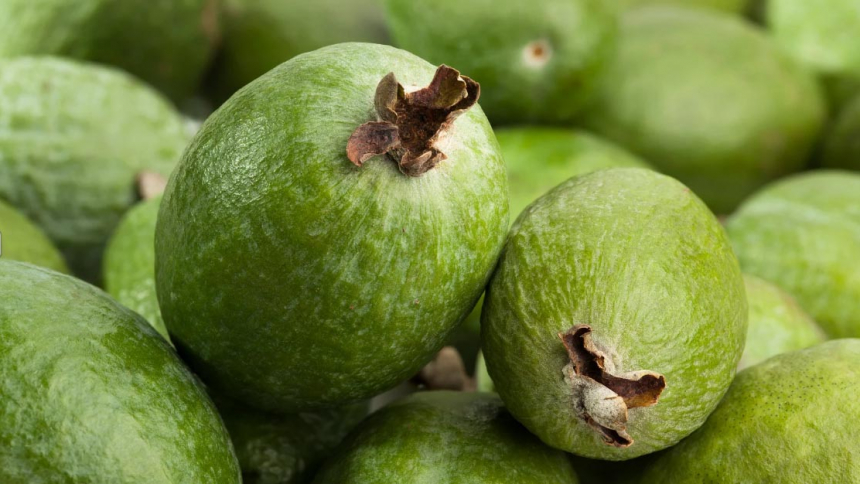
Perhaps it’s lack of familiarity, but the feijoa hasn’t taken off here like it has in New Zealand, where it has been a beloved backyard staple shared among neighbours for decades. In Western Australia, the evergreen tree is grown commercially in the Southern Forests and has a short but superb season in autumn. Let’s delve into this somewhat elusive fruit.
It comes from South America
Named after Portuguese naturalist João da Silva Feijó, the feijoa is native to Brazil, Uruguay and Colombia, where it has been cultivated for centuries. In Tibasosa, known as the feijoa capital of Colombia, the fruit is celebrated with an annual festival. Pronounced fay-jo-a, it is used in everything from juices and jams to liquor, while the leaves have been used in traditional medicine to treat diseases such as cholera. The plant does contain antioxidant properties, with research finding more in the skin than the flesh.
It is mistaken for a guava
Often referred to as the pineapple guava, fig guava, or guavasteen, the feijoa is similar in that the pulp has a gritty texture. However, while the flowering shrub is part of the same myrtle (myrtaceae) family, it is not a guava. The feijoa is more closely related to the myrtle and is more pear-shaped than a guava. It also has a softer, creamier flesh than many of the guava varieties.
It is rich in flavour and aroma
The feijoa is sweet and tangy, with a tropical flavour that many have described as an enticing mix of passionfruit, pineapple and pear, with even a hint of mint. While the heady scent is reminiscent of the same fruits, the feijoa’s aroma is all its own. It comes from organic compounds in the fruit known as methyl benzoate that is used to make perfume, as well as some solvents and pesticides.
It can be eaten in so many ways
The fruit can be eaten like a strawberry, as the skin is edible and doesn’t have any pips or stones. Most eat it more like an avocado or kiwifruit, however; simply slice in half and scoop out the flesh. Once you wrap your head around the feijoa, you’ll find there are myriad ways to use them – baked into muffins and cakes, churned into ice-cream and sorbets, stewed for crumbles and pies, chopped up for salsas, or turned into jams and chutneys. If you pick up a tray in autumn, try substituting them in this guava paste.
It’s a great garden addition
The feijoa copes well with both heat and frost, which makes it a good fit for the Southern Forests. Many people have a feijoa tree in the backyard as an ornamental plant because they look nice and don’t require much attention beyond a bit of mulch and some fertiliser. They like well-drained soil and plenty of sunlight. But if you’re just growing them for their looks, you’re missing out. A single tree produces an abundance of fruit, which drops to the ground as soon as it is ripe. Just pick them off the ground quickly, as feijoas are at their best for the next three to five days.